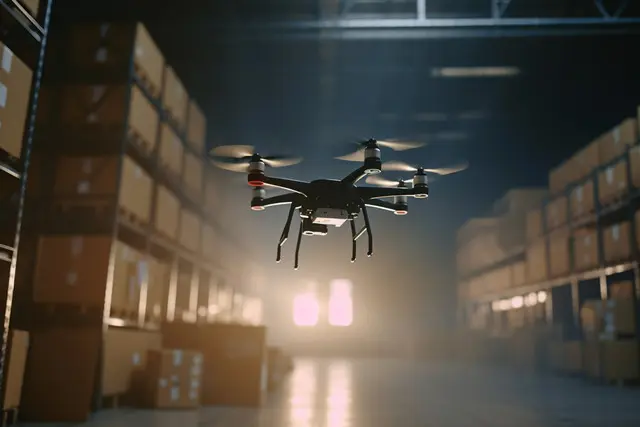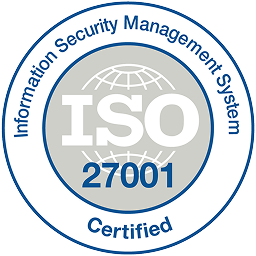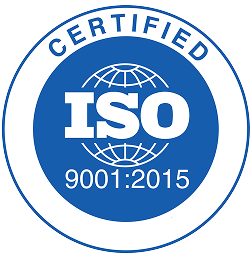The Power of Inventory Replenishment Automation: Empowering Seamless Supply Chains
Inventory replenishment automation is a game-changer for supply chain management, bringing efficiency, accuracy, and reduced costs to the forefront. In today’s fast-paced business environment, it’s crucial to streamline inventory management processes to stay competitive and meet customer demands effectively.
With the advent of Python, Artificial Intelligence (AI), and cloud-based solutions, inventory replenishment automation is no longer a distant dream. These technologies empower businesses to automate complex tasks, analyze vast amounts of data, and make informed decisions. By harnessing the power of automation, supply chain professionals can:
- Monitor inventory levels across multiple locations in real-time
- Analyze historical sales data and demand forecasts to determine optimal reorder points and quantities
- Generate purchase orders or replenishment requests automatically when inventory levels fall below predetermined thresholds
- Send purchase orders to suppliers and update inventory records upon receipt of goods
By implementing inventory replenishment automation, businesses can eliminate manual errors, reduce lead times, and optimize inventory levels. This leads to increased customer satisfaction, reduced costs, and a more efficient supply chain operation.

Python, AI, and Cloud: The Dynamic Trio for Inventory Replenishment Automation
Python, Artificial Intelligence (AI), and cloud-based platforms play pivotal roles in revolutionizing inventory replenishment automation.
Python: The Code of Automation
Python’s versatility and simplicity make it the ideal language for developing unattended bots that can tirelessly monitor inventory levels, analyze data, and generate purchase orders. These bots can operate 24/7, ensuring that inventory replenishment is always on track.
Attended Bots: Enhancing Human Capabilities
Attended bots, also built with Python, assist human workers by automating repetitive tasks such as data entry and order processing. This allows employees to focus on more strategic initiatives, boosting productivity and accuracy.
Cloud Platforms: The Ultimate Orchestrators
Cloud platforms offer a comprehensive suite of features and capabilities that far surpass traditional RPA/workflow tools. They provide robust automation orchestration, enabling seamless integration with various systems and applications. Additionally, cloud platforms offer:
- Scalability: Easily handle fluctuating workloads and large data volumes.
- Reliability: Ensure high availability and minimize downtime.
- Security: Implement robust security measures to protect sensitive data.
AI: The Edge of Intelligence
AI techniques, such as image recognition, natural language processing (NLP), and Generative AI, enhance the accuracy and efficiency of inventory replenishment automation. For instance, AI can:
- Identify damaged or defective items: Using image recognition to inspect incoming goods.
- Process purchase orders: Using NLP to extract data from purchase orders and automate order processing.
- Predict demand: Using Generative AI to analyze historical data and forecast future demand patterns.
By harnessing the power of Python, AI, and cloud platforms, businesses can create robust and intelligent inventory replenishment automation solutions that optimize supply chain operations, reduce costs, and enhance customer satisfaction.

Building the Inventory Replenishment Automation with Python and Cloud
To build a robust inventory replenishment automation solution, we need to break down the process into smaller, manageable sub-processes:
1. Monitoring Inventory Levels
- Use Python scripts to connect to inventory management systems and retrieve real-time inventory data.
- Store the data in a centralized cloud database for easy access and analysis.
2. Analyzing Historical Data and Demand Forecasts
- Import historical sales data and demand forecasts into a cloud-based analytics platform.
- Use Python to analyze the data and identify patterns and trends.
- Determine optimal reorder points and quantities based on the analysis.
3. Generating Purchase Orders
- When inventory levels fall below predetermined thresholds, trigger Python scripts to generate purchase orders.
- Send the purchase orders to suppliers via email or EDI.
4. Updating Inventory Records
- Upon receipt of goods, use Python scripts to update inventory records in the cloud database.
- Track the status of purchase orders and shipments to ensure timely delivery.
Data Security and Compliance
- Implement robust security measures, such as encryption and access controls, to protect sensitive data.
- Ensure compliance with industry regulations and standards.
Python vs. No-Code RPA/Workflow Tools
Python offers several advantages over no-code RPA/workflow tools:
- Flexibility: Python is a general-purpose programming language that allows for greater customization and flexibility in automation development.
- Scalability: Python scripts can be easily scaled to handle large volumes of data and complex processes.
- Integration: Python can seamlessly integrate with various systems and applications, making it easy to automate end-to-end processes.
Algorythum’s Approach
Algorythum takes a different approach to BPA by leveraging Python and cloud technologies. We understand the limitations of off-the-shelf automation platforms and believe that Python offers a more powerful and versatile solution. Our Python-based automations are:
- Tailor-made: We customize our solutions to meet the specific needs of each client, ensuring optimal performance and efficiency.
- Future-proof: Python is a constantly evolving language, ensuring that our automations remain up-to-date with the latest advancements.
- Cost-effective: Python is an open-source language, reducing licensing costs and making it a more affordable option.

The Future of Inventory Replenishment Automation
The future of inventory replenishment automation holds exciting possibilities to further enhance the proposed solution. By leveraging emerging technologies, we can unlock even greater efficiency, accuracy, and optimization.
1. Predictive Analytics:
Using machine learning algorithms, we can analyze historical data and demand forecasts to predict future inventory needs. This will enable businesses to make more informed decisions about inventory levels and replenishment schedules.
2. Blockchain Integration:
Blockchain technology can be used to create a secure and transparent record of inventory transactions. This will improve traceability and reduce the risk of fraud.
3. IoT Sensors:
IoT sensors can be deployed in warehouses to monitor inventory levels in real-time. This data can be integrated with the automation system to trigger replenishment orders automatically.
Subscribe to Algorythum
Stay up-to-date on the latest advancements in inventory replenishment automation and other industry-specific automation solutions. Subscribe to our newsletter to receive exclusive insights and updates.
Contact Us for a Free Feasibility and Cost-Estimate
If you’re interested in implementing a custom inventory replenishment automation solution for your business, contact our team today. We offer a free feasibility assessment and cost-estimate to help you determine the best approach for your specific needs.
Together, let’s harness the power of technology to optimize your supply chain and drive business success.

Algorythum – Your Partner in Automations and Beyond
At Algorythum, we specialize in crafting custom RPA solutions with Python, specifically tailored to your industry. We break free from the limitations of off-the-shelf tools, offering:
- A team of Automation & DevSecOps Experts: Deeply experienced in building scalable and efficient automation solutions for various businesses in all industries.
- Reduced Automation Maintenance Costs: Our code is clear, maintainable, and minimizes future upkeep expenses (up to 90% reduction compared to platforms).
- Future-Proof Solutions: You own the code, ensuring flexibility and adaptability as your processes and regulations evolve.









